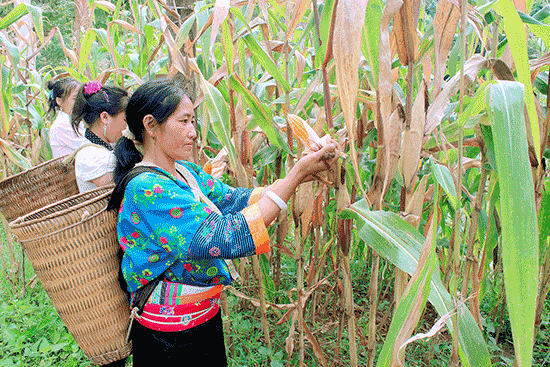Bac Kan (VNA) – Authorities of the northern mountainous province of Bac Kan have devised a range of measures to improve spiritual and material lives of locals from ethnic minority groups, thus narrowing the gap between the rich and the poor as well as between geographic areas.
This is part of efforts to realising millennium development goals (MDGs) in ethnic minority areas.
The locality targets to reduce the rate of poor households in ethnic minority areas by 2-2.5 percent/year, and bring hygiene water to over 30 percent of the total ethnic households by 2020.
It aims the literacy rate of ethnic people aged 10 years and older at 95 percent, and the proportion of commune-level female staff at over 30 percent while the rate of primary school enrollment at the right age of 95 percent.
To realise the goals, Bac Kan will focus on promoting poverty reduction through outlining programmes and specific policies, especially in social welfare, health care, education, towards implementing and sustainably maintaining MDGs for ethnic minority areas.
Additional, the province will call for technical and financial assistances from the community, and domestic and international organisations, while intensifying communication campaigns to raise public awareness of the significance of implementing MDGs for ethnic minority groups.
Nong Van Lung, head of the provincial Committee for Ethnic Affairs said in 2011-2015, said by implementing ethnic policies sourced from the State budget, the living standards of ethnic minority people were significant improved.
The rate of poor ethnic households declined through years, and they have been gained access to basic health care services, provided with free check-ups, Lung said.
Attention was also paid to preserving cultural identity of local ethnic minority groups, and implementing the Government’s Programme 135, which is a national programme for socio-economic development in the most disadvantaged communes in ethnic minority and mountainous areas.
Bac Kan is home to seven ethnic groups namely Tay, Nung, Kinh, Dao, Mong, Hoa and San Chay, with over 80 percent of those is the ethnic minority people.
The rate of poor households in the locality still remains high, accounting for 29.4 percent of the locality’s population.-VNA
This is part of efforts to realising millennium development goals (MDGs) in ethnic minority areas.
The locality targets to reduce the rate of poor households in ethnic minority areas by 2-2.5 percent/year, and bring hygiene water to over 30 percent of the total ethnic households by 2020.
It aims the literacy rate of ethnic people aged 10 years and older at 95 percent, and the proportion of commune-level female staff at over 30 percent while the rate of primary school enrollment at the right age of 95 percent.
To realise the goals, Bac Kan will focus on promoting poverty reduction through outlining programmes and specific policies, especially in social welfare, health care, education, towards implementing and sustainably maintaining MDGs for ethnic minority areas.
Additional, the province will call for technical and financial assistances from the community, and domestic and international organisations, while intensifying communication campaigns to raise public awareness of the significance of implementing MDGs for ethnic minority groups.
Nong Van Lung, head of the provincial Committee for Ethnic Affairs said in 2011-2015, said by implementing ethnic policies sourced from the State budget, the living standards of ethnic minority people were significant improved.
The rate of poor ethnic households declined through years, and they have been gained access to basic health care services, provided with free check-ups, Lung said.
Attention was also paid to preserving cultural identity of local ethnic minority groups, and implementing the Government’s Programme 135, which is a national programme for socio-economic development in the most disadvantaged communes in ethnic minority and mountainous areas.
Bac Kan is home to seven ethnic groups namely Tay, Nung, Kinh, Dao, Mong, Hoa and San Chay, with over 80 percent of those is the ethnic minority people.
The rate of poor households in the locality still remains high, accounting for 29.4 percent of the locality’s population.-VNA
VNA





















